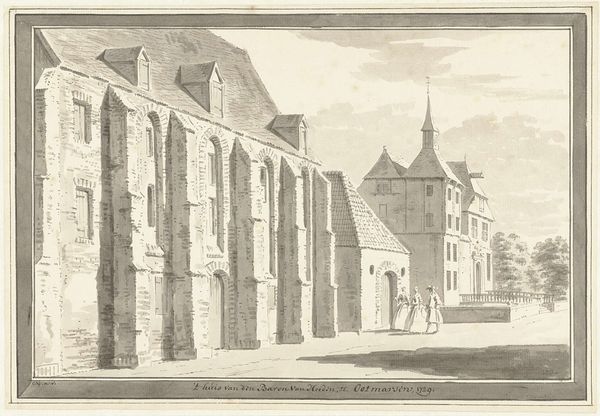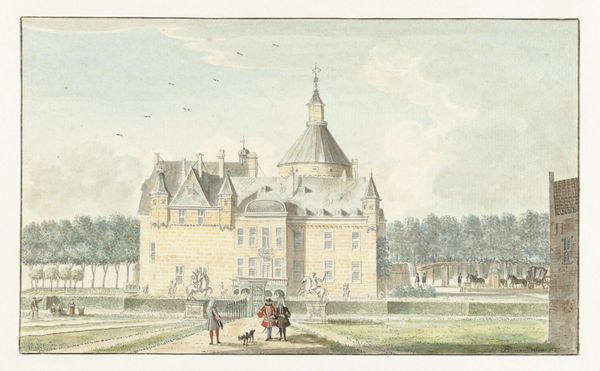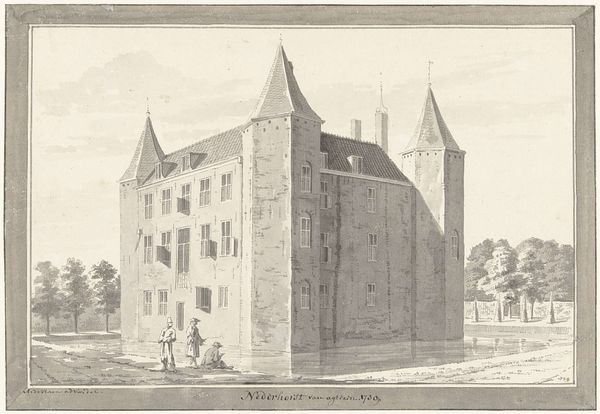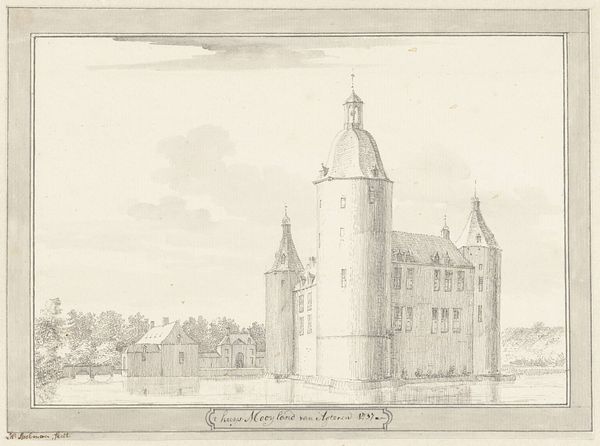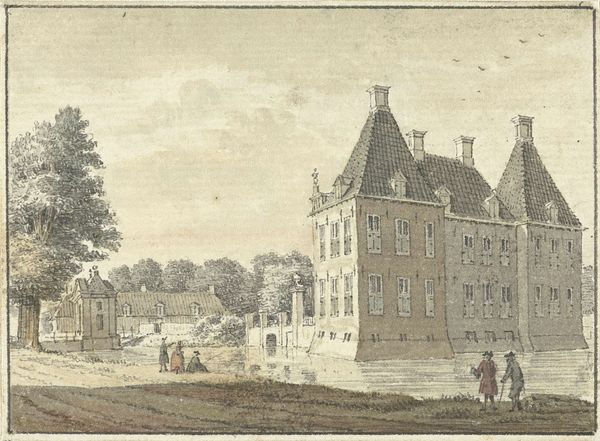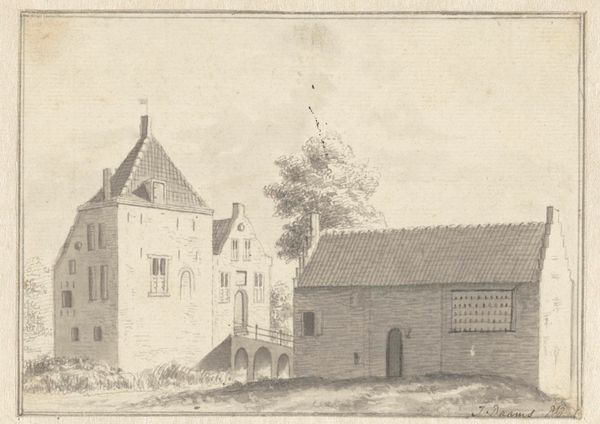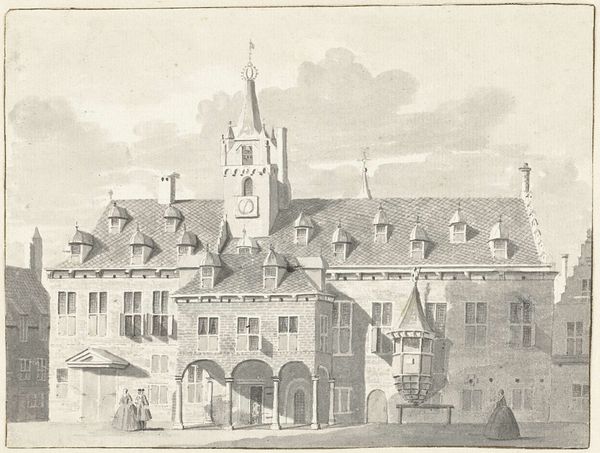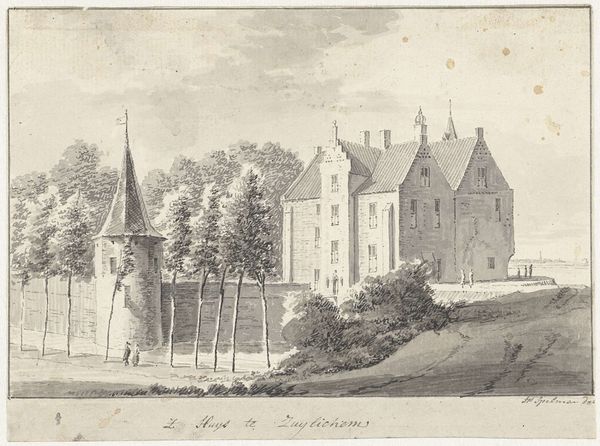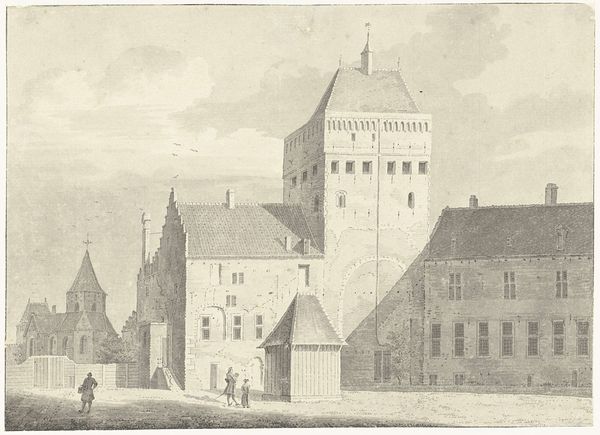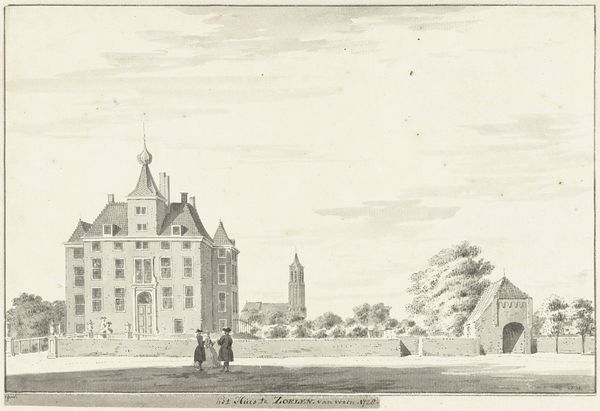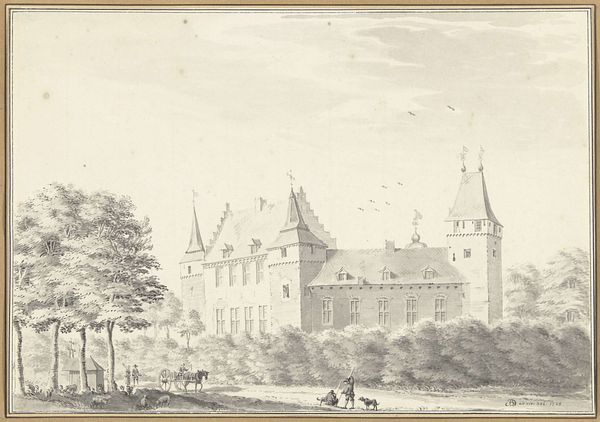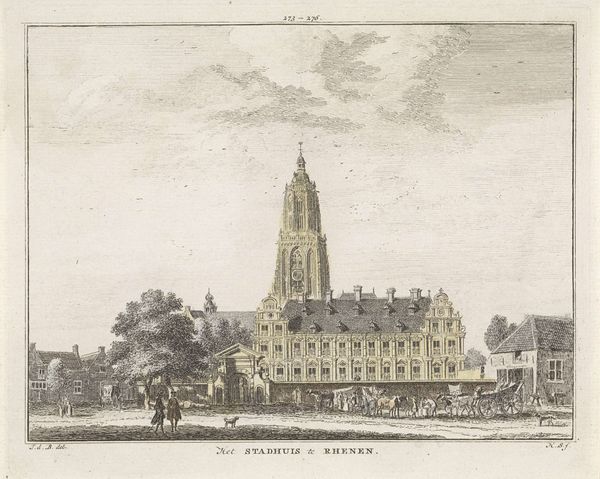
drawing, paper, ink
#
drawing
#
baroque
#
landscape
#
paper
#
form
#
ink
#
line
#
cityscape
#
realism
#
rococo
Dimensions: height 200 mm, width 313 mm, height 129 mm, width 211 mm
Copyright: Rijks Museum: Open Domain
Curator: Looking at this, I feel like I've stumbled onto the set of some Wes Anderson historical drama! All these carefully ruled lines...the symmetrical facade reflected in the moat...it's got this wonderfully whimsical, theatrical feel. Editor: Exactly! What you’re reacting to is Aert Schouman’s "Kasteel Lockhorst of Oud-Teylingen bij Warmond," dating from 1754. This pen and ink drawing depicts the Lockhorst Castle with meticulous detail and precision, fitting with the stylistic tastes of the era. Schouman focuses on the architecture, sure, but think about the patrons of this piece; the rising merchant class wanted views of their country houses and estates, turning status into visual art. Curator: That makes sense. There’s a distinct lack of wild, untamed nature, isn't it? The landscape almost feels… controlled. The people in the foreground seem like props, carefully positioned. Though I love the way they contrast against the rigid backdrop of the castle—this sense of human figures dwarfed by the built environment and its history. It feels...familiar. Editor: Very insightful. And the details are wonderful when you consider the role images played then. Before photography, drawings like this were crucial for documentation and dissemination of knowledge. Here, Schouman showcases not only his technical skill with line work and shading but also provides a visual record of the estate's layout and architectural elements. Consider how those architectural features reinforced social hierarchy in the 18th century. Curator: I see that, absolutely. Yet there's something playful about it. It feels as if he's gently mocking the formality. Perhaps not mocking precisely, but definitely softening the edges of power. I can’t help imagining what scandalous conversations the couple are having as they stroll beside that immaculate moat! Editor: It’s easy to overlook drawings, because paintings command so much attention. But look closer. Ask why people found value in art during this period, who controlled art-making spaces, and how they distributed work. And that starts with recognizing details! Curator: Precisely. It makes you want to just step into this little watery world! A drawing of history can indeed draw us to think about what’s relevant in our society.
Comments
No comments
Be the first to comment and join the conversation on the ultimate creative platform.
